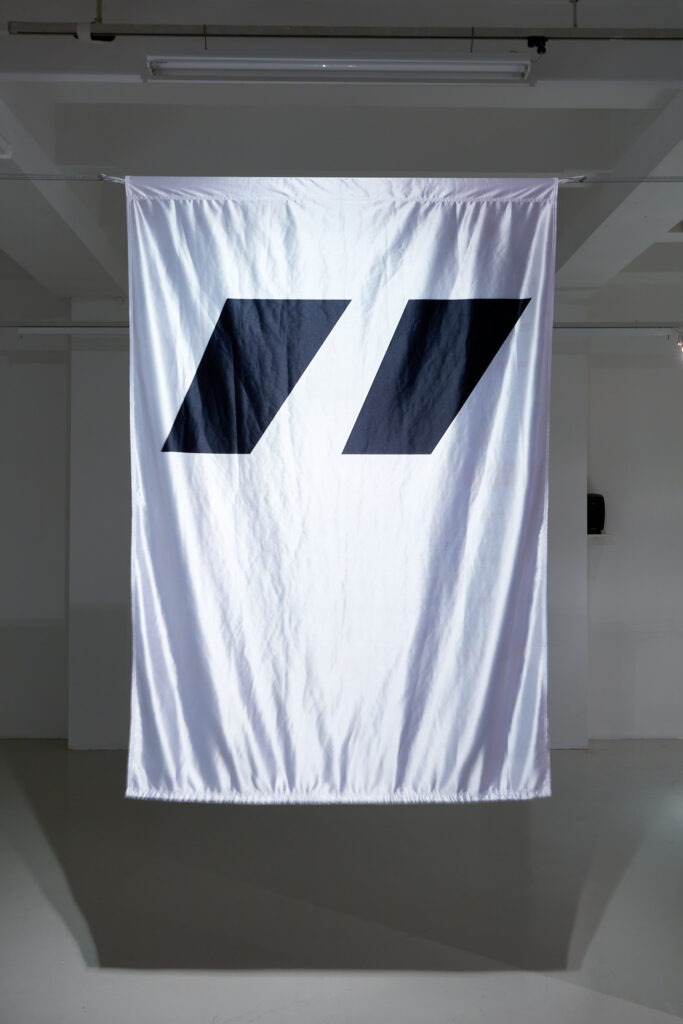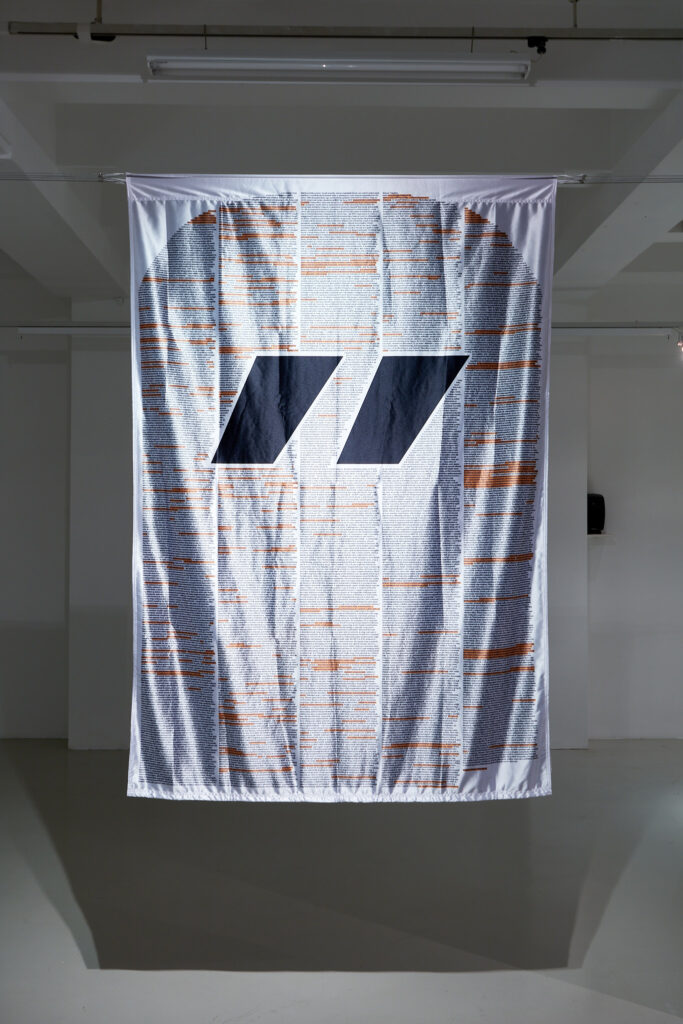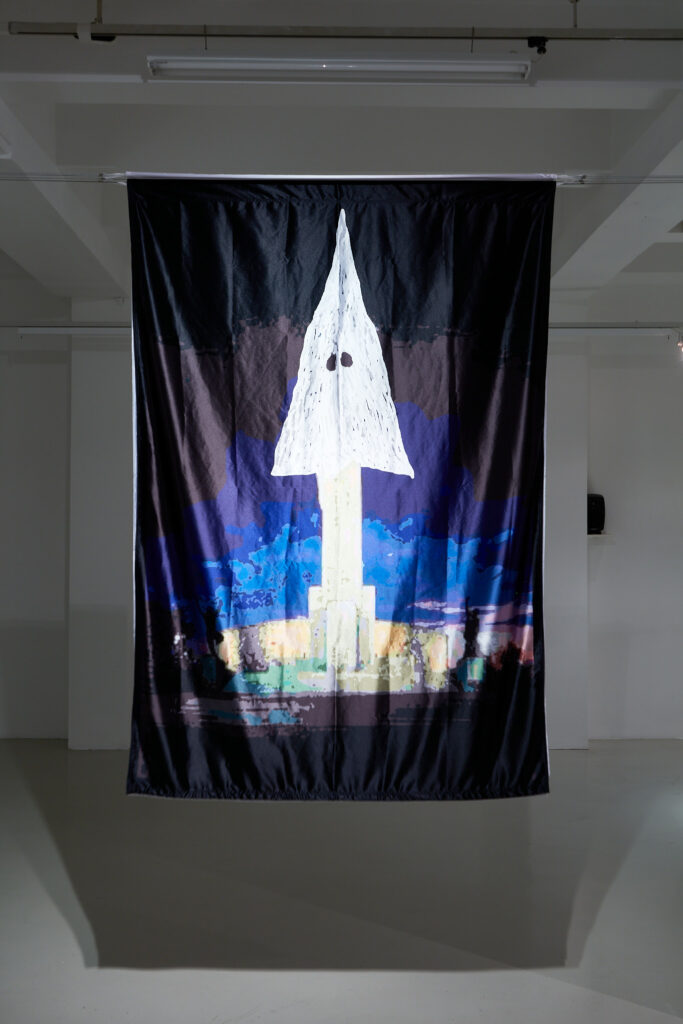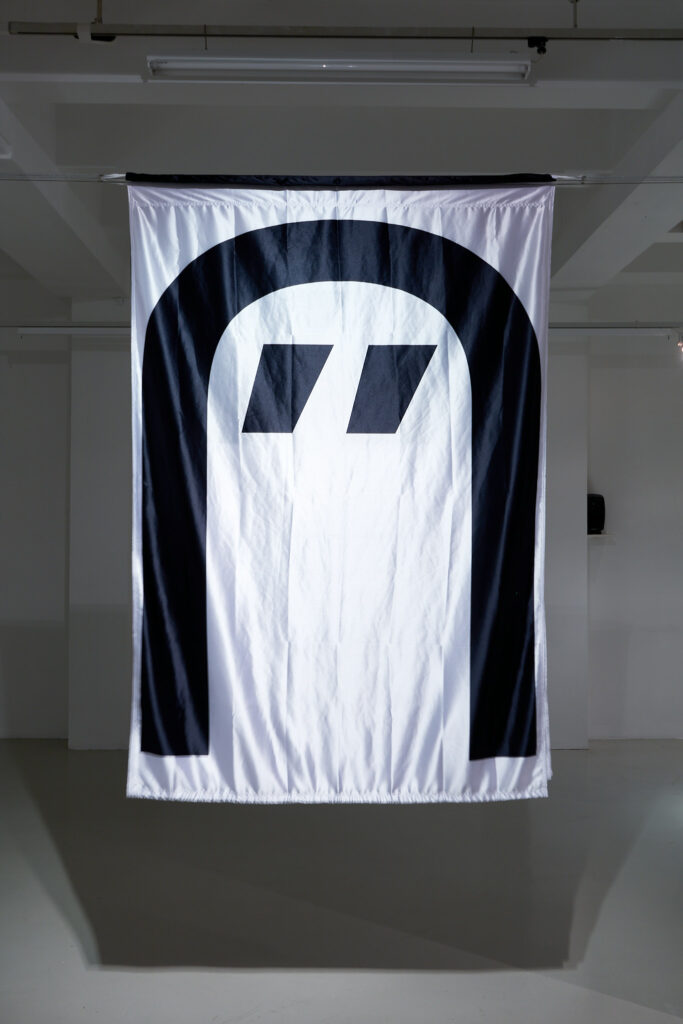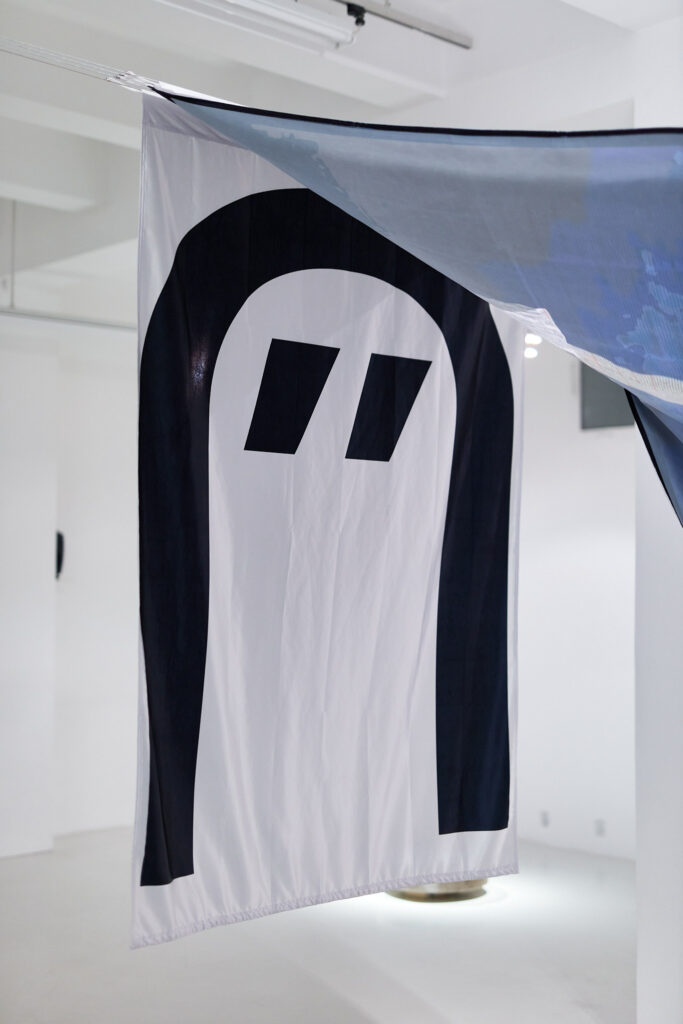4 digitális print, szintetikus szatén, 140×200 cm, 2021
„Az 1992 júniusi Budapesti Búcsú és egyben a rendszerváltást követő évek legemlékezetesebb köztéri műve a Lőrinczy „Lorrensy” Júlia ötlete alapján St.Auby Tamás által megvalósított A szabadság lelkének szobra volt. A Szabadság-szobrot ejtőernyő selyemmel eltakaró efemer alkotás lebontása után pár héttel, 1992. augusztus 20-án publikálta Csurka István Néhány gondolat a rendszerváltozás két esztendeje és az MDF új programja kapcsán című dolgozatát a Magyar Fórum hasábjain. A kormánypárt egy vezető politikusa, egy elismert és közismert író ötvenkét flekken taglalta antiszemita, nemzeti-paranoiás tételeit, s ez a kezdeti megrökönyödés és kritika ellenére az elmúlt évtizedekben a magyar szélsőjobboldal kötelező olvasmányává vált. A Magyar Demokrata Fórum ugyan részben elhatárolódott Csurkától, egy év viaskodás után ki is zárták a pártból, de az általa alapított Magyar Igazság és Élet Pártja a pillanatnyi hatalomvesztést követően, hamarosan parlamenti sikerekkel kárpótolta. Horthy Miklóst 1993-ban újratemették Kenderesen. Horthyval a rendszerváltás sok ígéretét is eltemették, ’89 naiv ábrándjai végleg szertefoszlottak, a szabadság lelke felszívódott, a korona kikerült a múzeumból (mert nem volt elég a címeren) és bevonult a parlamentbe, a bőrfejűekből politikusok és gárdisták lettek, a csurkai „gondolat” átlényegült és új testet öltött.
1992-ben jelent meg az első professzionális tördelőprogram, a QuarkXPress 3.1, ami Windows-on is kifogástalanul futott. Számomra ezek az évek a MacOS és a Windows karakterkészletek inkompatibilitásáról szóltak: a „kettős éles ékezet” reménytelen harcáról a postscript univerzumban. Az ő és az ű, a hungarumlaut konvertálgatása egyik komputerről a másikra, a digitális kolonializmus vakfoltjával való szembesülés, ami persze manapság már csak egy jelentéktelen, generációs anekdota a személyi számítógépek hőskorából. St.Auby diakritikus szobra, a monumentális emlékműre illesztett „megkülönböztető jel” csak fényképeken és maketteken létezik, míg a poszt-fasiszta dolgozatból „alaptörvény” lett.”
/ „The most memorable public artwork of the Budapest Búcsú in June 1992 and of the years following the fall of socialism in Hungary was the statue “The Soul of Liberty,” a composition by Tamás St.Auby based on an idea of Júlia Lőrinczy “Lorrensy.” On 20 August 1992, a few weeks after the demolition of the work (which involved covering Liberty Statue on Gellért Hill in Budapest with a silk draping), István Csurka published an essay entitled “Some Thoughts on Two Years of Regime Change and the New Program of the Hungarian Democratic Forum” in Magyar Fórum. A leading politician of the governing party and a familiar and recognized writer, Csurka devoted some 52 pages to his anti-Semitic, nationalistic, paranoid ideas, and while the article met with initial consternation and criticism, in recent decades, it became required reading for the Hungarian far right. Although the Hungarian Democratic Forum partially distanced itself from Csurka and, after a year of wrangling, eventually expelled him from the party, Csurka went on to found his own party, the Hungarian Justice and Life Party, which soon enjoyed parliamentary successes and brought Csurka back to the fore. Miklós Horthy was reburied in Kenderes in 1993. With Horthy’s reburial, many of the promises of the regime change were also buried, and the naive dreams of the pivotal year of 1989 were utterly frayed. The spirit of freedom vanished into thin air, the Hungarian crown was removed from the museum (as if its place on the coat-of-arms were somehow not enough) and moved to the parliament. The skinheads became politicians, and Csurka’s “ideas” were transfigured and given a new incarnation.
In 1992, QuarkXPress 3.1, the first professional typesetting software which ran flawlessly on Windows, was released. For me, those years were very much about the incompatibility of MacOS and Windows character sets: the hopeless struggle, in the postscript universe, with some of the accents used on vowels in Hungarian. Moving the Hungarian letters “ő” and “ű,” letters made using what one could call the hungarumlaut, from one computer to another, confronting one of the blind spots in digital colonialism, which today of course is nothing more than a quick generational anecdote from the heyday of personal computers. St. Auby’s diacritical sculpture, the “distinguishing sign” placed on the monumental memorial, exists only in photographs and models, while the post-fascist article has become a “Fundamental Law.”


